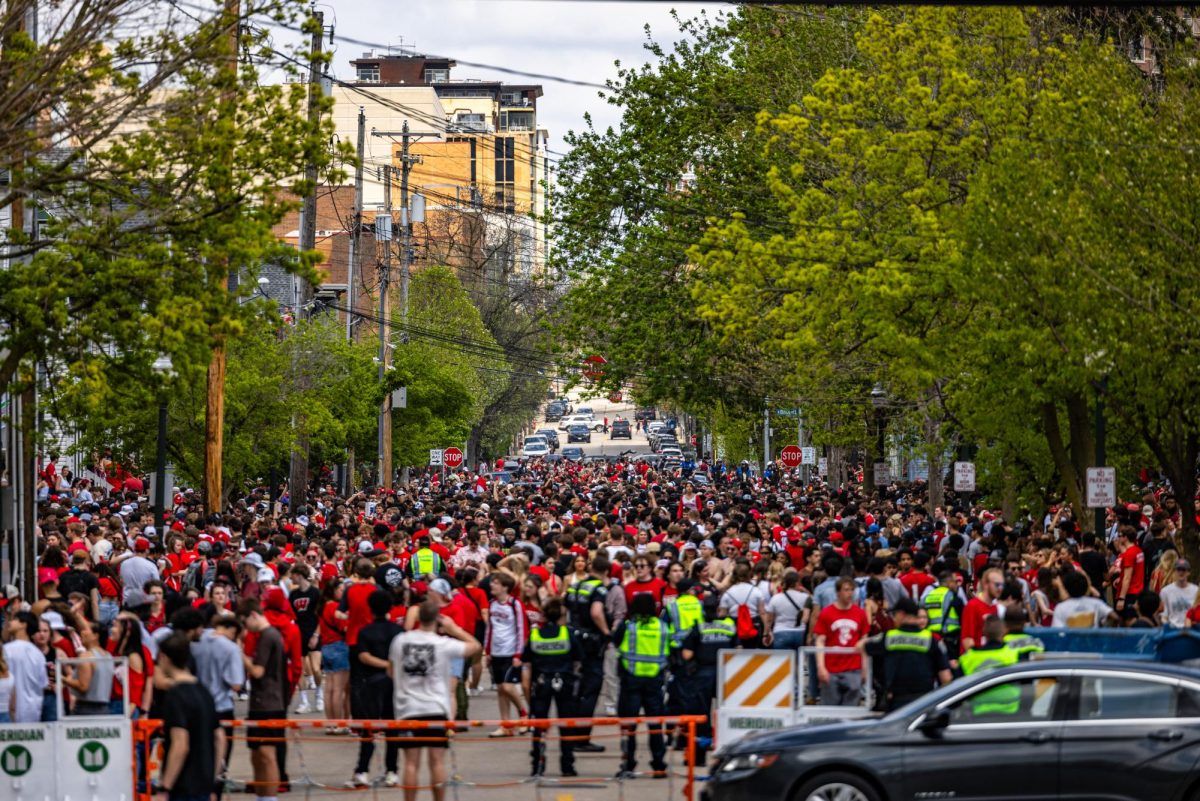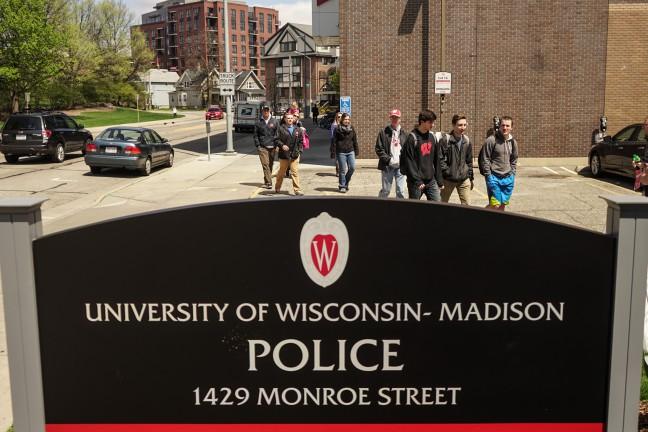Members of the University of Wisconsin community received a familiar crime warning email Monday describing an ongoing string of on-campus burglaries involving electronics and credit cards. UW is obligated to send these emails under the Clery Act, which mandates campuses report certain crimes including homicide, sexual offenses, robbery, burglary and aggravated assault.
Those who opened the email, however, may have been surprised that in addition to the usual description and location of the crime and a vague description of any suspects involved in the case, this particular email also included photos of the suspects — two young black men.
The email tells students and faculty if they see the suspects to not approach them and to call 911 immediately. One of the suspects is named and pictured twice — once in what appears to be a mugshot from a previous case and once in an image from security camera footage of the 19-year-old wearing a hoodie. The second suspect is still unidentified, but his photo is also included. It’s a somewhat low-resolution image of a boy wearing a Chicago Bulls hat.
New UWPD Chief encourages greater community interaction, safety
University of Wisconsin Police Department policy does allow crime warnings to include descriptions of suspects. But a quick search of previous “timely warning” emails reveals that most regarding theft and burglaries did not include photos, names or past criminal records. Since enough surveillance footage was available to produce multiple photos of the suspects in Monday’s email, it seems unlikely there has never been images of white suspects available to include in previous crime warnings. Nevertheless, white suspects are almost never pictured.
This biased reporting is not an isolated incident. Indeed, the criminalization of black men is inexplicably linked with national issues like police violence and mass incarceration. Biased reporting and cherry-picked imagery are key players in creating the widespread conception of black men as thugs and criminals.
Sending an email blast to thousands of people’s personal inboxes on a campus with an enrollment that is only 2 percent black, telling them to look out for a 19-year-old nonviolent black man in a hoodie and call 911 if they see him could possibly help UWPD find their suspect.
But it will almost certainly cause some black students on campus to feel unsafe. It will likely cause some white students to assume their belief all black teenagers are dangerous has been confirmed. And it may — as it has time and time again — end up costing an innocent black person their life and their future, simply for being in the wrong place at the wrong time.
UWPD, MPD must be vigilant in keeping students aware of sexual assault
Imagery is an extremely powerful tool. It can cause emotional reactions in a way that words often don’t. It creates a story and helps viewers categorize information based on their past experiences and perceptions. For every person who sees these images and makes a mental note to keep their eyes out for the people in the photos, there is another person who will be taught yet again that “criminals” look like 19-year-old black boys in hoodies and black men who wear Bulls hats. Another person will be taught they are justified in profiling black people as dangerous criminals.
While I have nothing but sympathy for the victims of this recent string of burglaries, UWPD is responsible first and foremost for protecting members of our community, not their property.
The true threat here is not stolen electronics. It is the potential for an already hostile racial climate on campus to worsen, for more black people to feel unsafe in Madison and for more white students who are uncomfortable with racial diversity on campus to feel vindicated in profiling people who don’t look like them.
Irene Toro Martinez, Caitlin Tyler-Richards, Leland Pan, and Rachel S. Gross contributed to the ideas expressed in this column. Julia O’Donnell ([email protected]) is a senior majoring in journalism and strategic communication.





















